U1 (Berlin U-Bahn) on:
[Wikipedia]
[Google]
[Amazon]

 U1 is a line on the
U1 is a line on the
 Finally, after many years and negotiations, Siemens proposal for an elevated railway line from ''Warschauer Brücke'' via
Finally, after many years and negotiations, Siemens proposal for an elevated railway line from ''Warschauer Brücke'' via 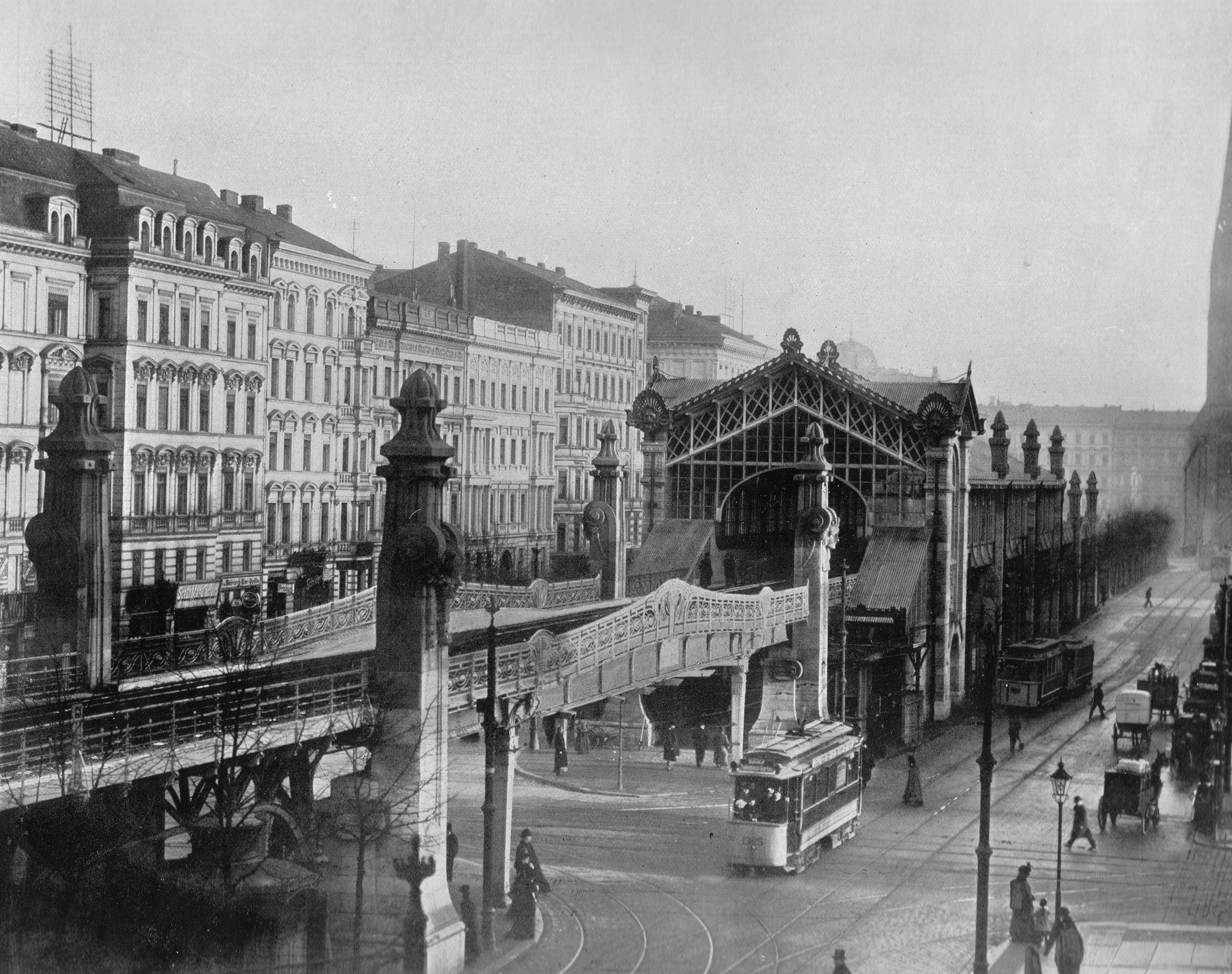 The total length of the elevated and underground railway was now . The largest part of the route, approximately , would be established on viaducts and connect eleven elevated stations. In addition there would be of underground line with three underground stations. The planners believed that 8-carriage trains would not be needed and therefore designed it with 80 m-long (260 ft) platforms, sufficient only for 6-carriage trains.
The first of the line was finished in 1901 and on 15 February 1902 the first train ran on the line from ''Potsdamer Platz'' to Zoologischer Garten, then to ''Stralauer Tor'' and back to ''Potsdamer Platz''. This allowed many prominent Berliners to participate in the opening trip, including the Prussian minister for public works, Karl von Thielen. On 18 February 1902 the first stage of the Berlin U-Bahn was officially opened (''Stralauer Tor''–''Potsdamer Platz''). In March the line was extended to ''Zoologischer Garten'' and on 17 August it was extended by 380 m from ''Stralauer Tor'' to ''Warschauer Brücke''. There were at that time only two lines:
*From ''Warschauer Brücke'' to ''Zoologischer Garten'' via ''Potsdamer Platz'' (with reversal).
*From ''Warschauer Brücke'' directly to ''Zoologischer Garten''.
On 14 December the line was extended to ''Knie''. The section between ''Gleisdreieck'' and ''Knie'' (now
The total length of the elevated and underground railway was now . The largest part of the route, approximately , would be established on viaducts and connect eleven elevated stations. In addition there would be of underground line with three underground stations. The planners believed that 8-carriage trains would not be needed and therefore designed it with 80 m-long (260 ft) platforms, sufficient only for 6-carriage trains.
The first of the line was finished in 1901 and on 15 February 1902 the first train ran on the line from ''Potsdamer Platz'' to Zoologischer Garten, then to ''Stralauer Tor'' and back to ''Potsdamer Platz''. This allowed many prominent Berliners to participate in the opening trip, including the Prussian minister for public works, Karl von Thielen. On 18 February 1902 the first stage of the Berlin U-Bahn was officially opened (''Stralauer Tor''–''Potsdamer Platz''). In March the line was extended to ''Zoologischer Garten'' and on 17 August it was extended by 380 m from ''Stralauer Tor'' to ''Warschauer Brücke''. There were at that time only two lines:
*From ''Warschauer Brücke'' to ''Zoologischer Garten'' via ''Potsdamer Platz'' (with reversal).
*From ''Warschauer Brücke'' directly to ''Zoologischer Garten''.
On 14 December the line was extended to ''Knie''. The section between ''Gleisdreieck'' and ''Knie'' (now
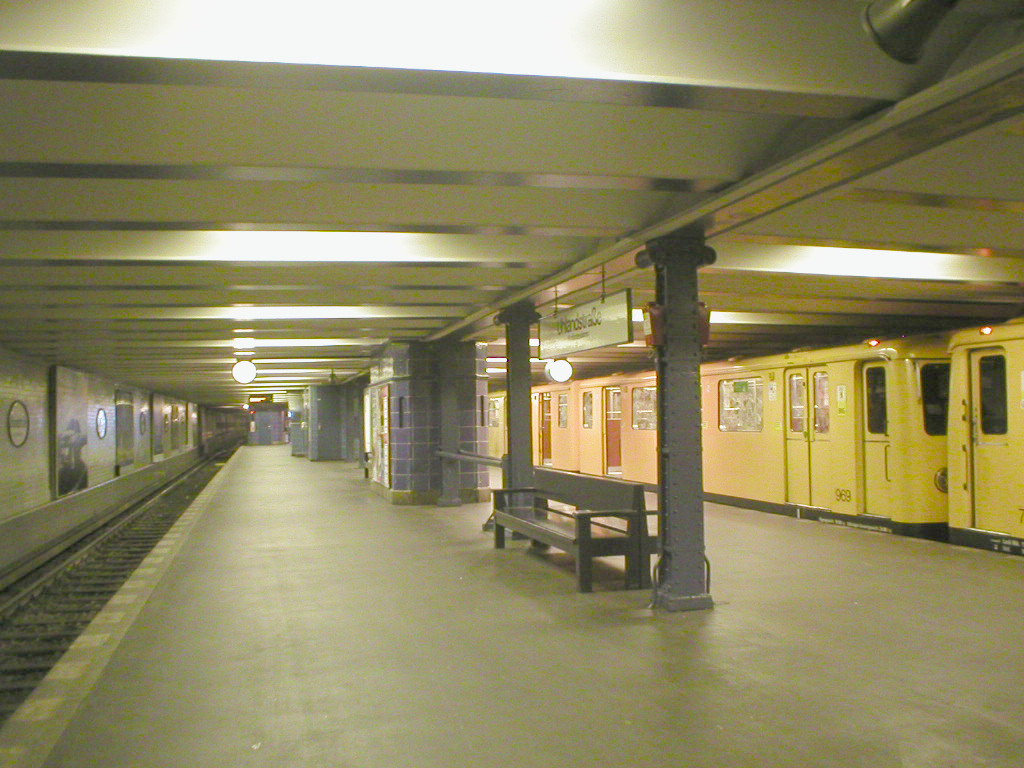 In the summer of 1907, the elevated railway company of the new city of
In the summer of 1907, the elevated railway company of the new city of 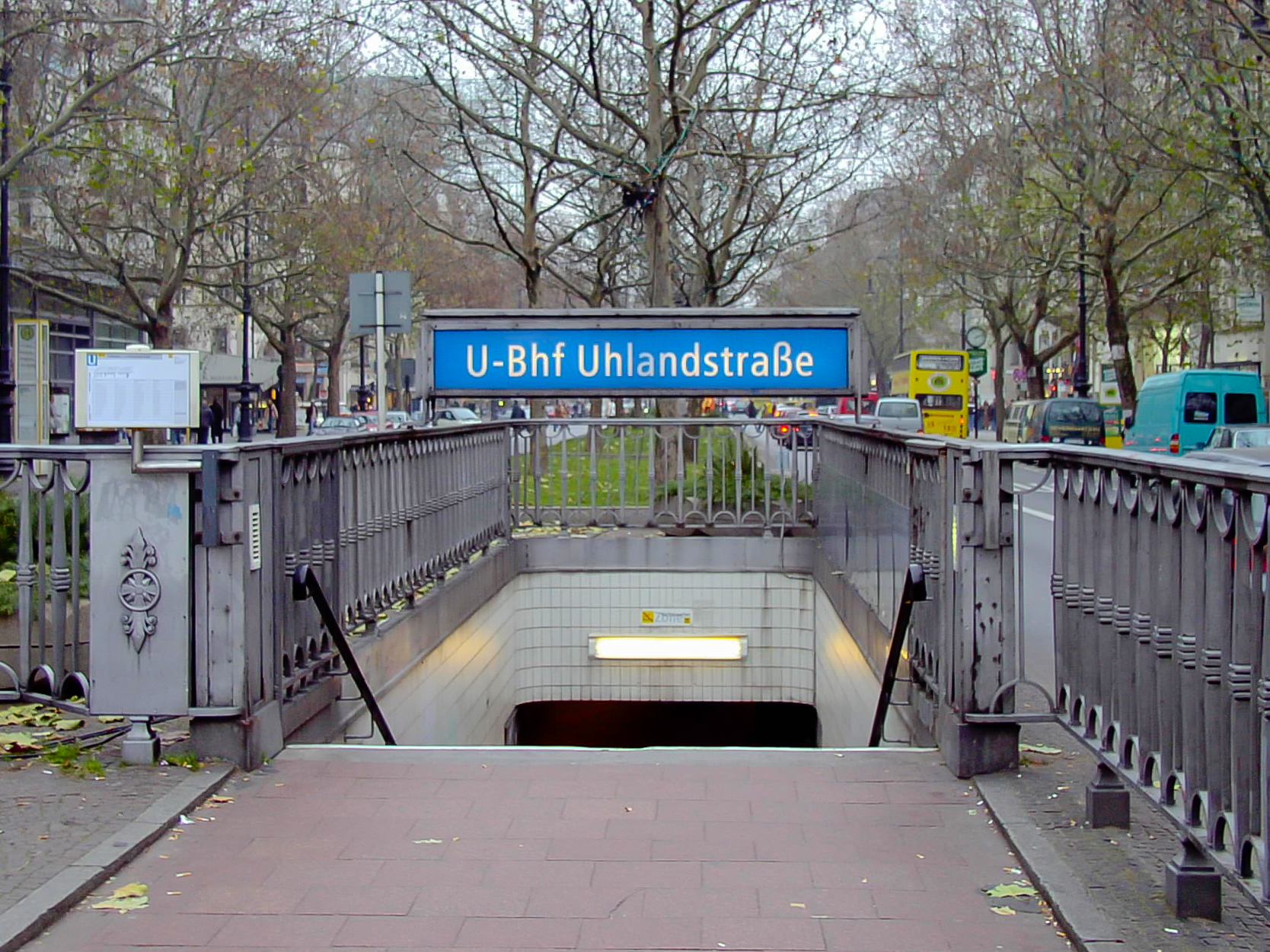 The double-track ''Wittenbergplatz'' station, which only had two side platforms, had to be completely rebuilt. The new station required five platforms with a sixth prepared for development and an entrance hall. The cities of Wilmersdorf and Charlottenburg submitted many suggestions for its design. Finally the house architect of the elevated railway company, Alfred Grenander, was appointed to design the station on the recommendation of the royal police chief.
The additional line to ''Uhlandstraße'' branched at ''Wittenbergplatz'' and had no intervening stations, but it was intended to be extended to
The double-track ''Wittenbergplatz'' station, which only had two side platforms, had to be completely rebuilt. The new station required five platforms with a sixth prepared for development and an entrance hall. The cities of Wilmersdorf and Charlottenburg submitted many suggestions for its design. Finally the house architect of the elevated railway company, Alfred Grenander, was appointed to design the station on the recommendation of the royal police chief.
The additional line to ''Uhlandstraße'' branched at ''Wittenbergplatz'' and had no intervening stations, but it was intended to be extended to
 One of the most dangerous places of the entire U-Bahn network was found at the triangular rail junction at Gleisdreieck, which connected the main route between ''Warschauer Brücke'' and ''Zoologischer Garten'' with the branch line to ''Potsdamer Platz''. This branch was protected only by signals, so that train-driver inattention could easily lead to a disaster, as happened on 26 September 1908. A U-Bahn train ran into the side of another train, forcing two carriages off the track. One carriage fell over the viaduct and 21 passengers died. As a result, it was decided to change the configuration at ''Gleisdreieck''.
Construction began in May 1912 to replace the rail triangle with two lines built as a grade-separated cross with a new ''Gleisdreieck'' interchange station at the intersection. These lines now form part of U1 and U2. The new works were carried out largely with full services operating, although services were briefly interrupted on each line. On 3 November 1912 the new ''Gleisdreieck'' station was opened but construction was not completed until August 1913. The connecting track from the ''Pankow'' direction to the ''Warschauer Straße'' direction continued to operate until the completion of works for construction supply vehicles.
One of the most dangerous places of the entire U-Bahn network was found at the triangular rail junction at Gleisdreieck, which connected the main route between ''Warschauer Brücke'' and ''Zoologischer Garten'' with the branch line to ''Potsdamer Platz''. This branch was protected only by signals, so that train-driver inattention could easily lead to a disaster, as happened on 26 September 1908. A U-Bahn train ran into the side of another train, forcing two carriages off the track. One carriage fell over the viaduct and 21 passengers died. As a result, it was decided to change the configuration at ''Gleisdreieck''.
Construction began in May 1912 to replace the rail triangle with two lines built as a grade-separated cross with a new ''Gleisdreieck'' interchange station at the intersection. These lines now form part of U1 and U2. The new works were carried out largely with full services operating, although services were briefly interrupted on each line. On 3 November 1912 the new ''Gleisdreieck'' station was opened but construction was not completed until August 1913. The connecting track from the ''Pankow'' direction to the ''Warschauer Straße'' direction continued to operate until the completion of works for construction supply vehicles.
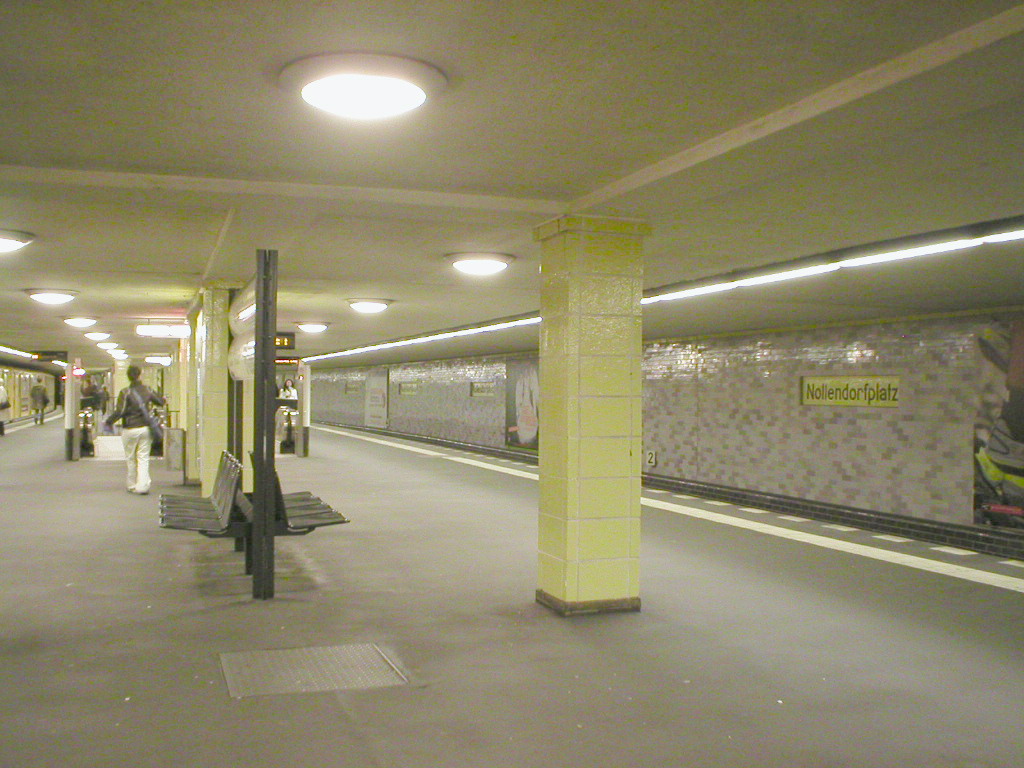 The small profile network was only slightly extended during the
The small profile network was only slightly extended during the
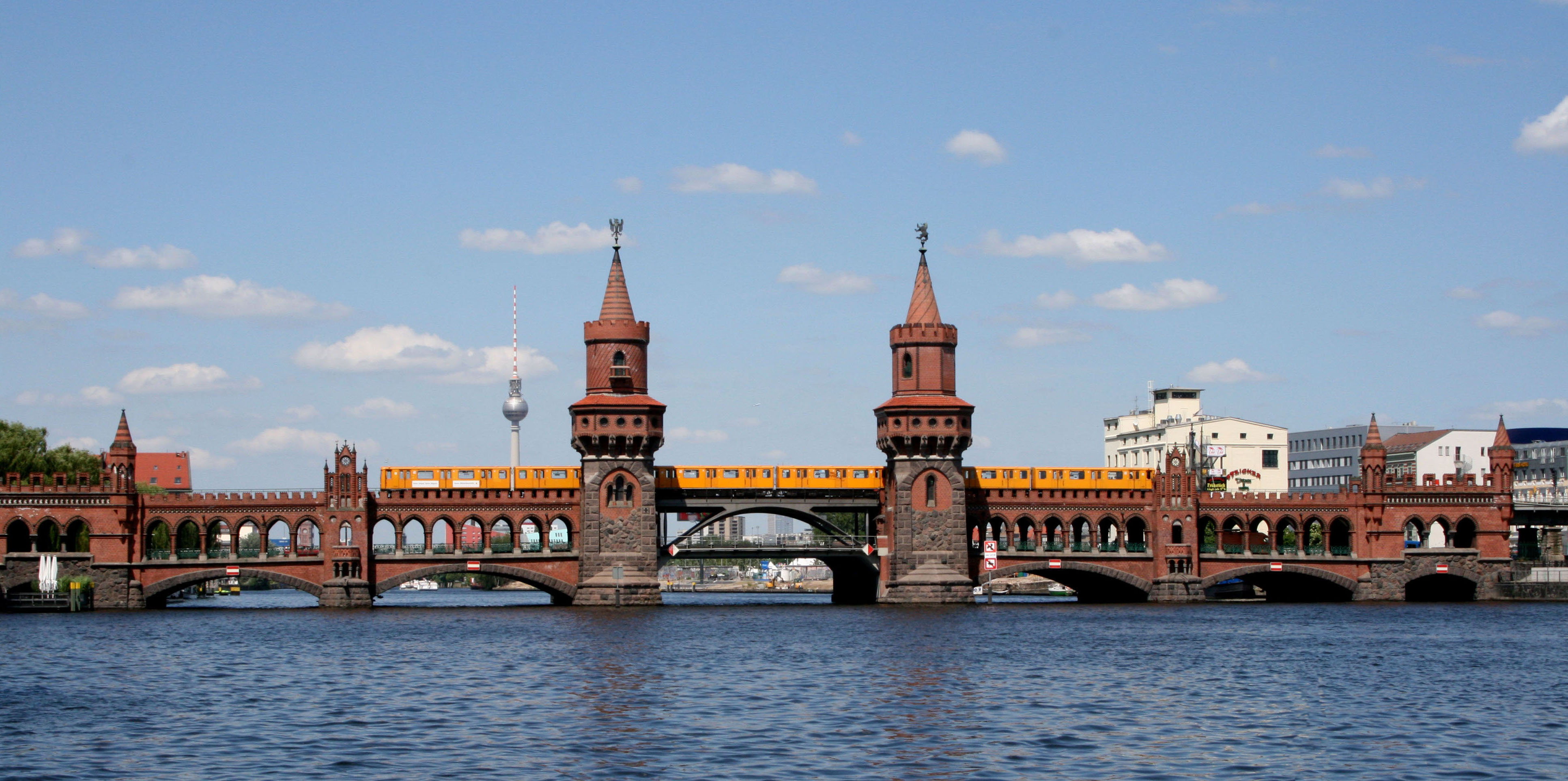 After the fall of the Berlin Wall on 9 November 1989 and German reunification on 3 October 1990, it was also necessary to combine the two U-Bahn networks of the east and west again. When line ''U2'' started running through in 1993, line ''U1'' still ended at ''Schlesisches Tor'' station, where it had terminated since August 1961.
The first reconstruction work on the line began in 1992. Numerous repairs had to be made and new buildings were necessary because some station buildings had been demolished during the GDR era. The
After the fall of the Berlin Wall on 9 November 1989 and German reunification on 3 October 1990, it was also necessary to combine the two U-Bahn networks of the east and west again. When line ''U2'' started running through in 1993, line ''U1'' still ended at ''Schlesisches Tor'' station, where it had terminated since August 1961.
The first reconstruction work on the line began in 1992. Numerous repairs had to be made and new buildings were necessary because some station buildings had been demolished during the GDR era. The
"Will-o'-the-wisp."
''Commentary.'' Accessed May 17, 2021.
pics of U1
* ''U1 – Geschichte(n) aus dem Untergrund''. January 1998, Berlin, GVE e. V., * B. Jäger, G. Wachter (Hrsg.): ''Abriß oder Ertüchtigung. Ein Beitrag zur Auseinandersetzung um denkmalgeschützte Eisenkonstruktionen am Beispiel der Berliner Hochbahn''. Vice Versa Verlag, Berlin 1999. {{Public transport in Berlin Berlin U-Bahn lines Articles containing video clips Railway lines opened in 1902 1902 establishments in Germany

 U1 is a line on the
U1 is a line on the Berlin U-Bahn
The Berlin U-Bahn (; short for , "underground railway") is a rapid transit system in Berlin, the capital and largest city of Germany, and a major part of the city's public transport system. Together with the S-Bahn, a network of suburban train li ...
, which is long and has 13 stations. Its traditional line designation was BII. It runs east–west and its eastern terminus is Warschauer Straße S-Bahn station where it connects to the Schlesische Bahn. From there it runs through Kreuzberg
Kreuzberg () is a district of Berlin, Germany. It is part of the Friedrichshain-Kreuzberg borough located south of Mitte. During the Cold War era, it was one of the poorest areas of West Berlin, but since German reunification in 1990 it ha ...
via Gleisdreieck and Wittenbergplatz on to the Kurfürstendamm
The Kurfürstendamm (; colloquially ''Ku'damm'', ; en, Prince Elector Embankment) is one of the most famous avenues in Berlin. The street takes its name from the former ''Kurfürsten'' (prince-electors) of Brandenburg. The broad, long boulevar ...
.
The eastern section of the line is the oldest part of the Berlin U-Bahn, although it is largely above ground.
Nomenclature
The U1 route was originally part of BII until 1957, where it was renamed to BIV until 1 March 1966. While the main section between Wittenbergplatz and Schlesisches Tor has been designated as line 1 since 1966, the western end of the line has changed twice. It was consequently renumbered to Line "3" and "U3" in 1993, before being renamed U15 until 2004.History
The increasing traffic problems inBerlin
Berlin ( , ) is the capital and List of cities in Germany by population, largest city of Germany by both area and population. Its 3.7 million inhabitants make it the European Union's List of cities in the European Union by population within ci ...
at the end of the 19th century led to a search for new efficient means of transport. Inspired by Werner von Siemens
Ernst Werner Siemens (von Siemens from 1888; ; ; 13 December 1816 – 6 December 1892) was a German electrical engineer, inventor and industrialist. Siemens's name has been adopted as the SI unit of electrical conductance, the siemens. He foun ...
, numerous suggestions were made for overhead conveyors, such as a suspension railway, as was later built in Wuppertal
Wuppertal (; "''Wupper Dale''") is, with a population of approximately 355,000, the seventh-largest city in North Rhine-Westphalia as well as the 17th-largest city of Germany. It was founded in 1929 by the merger of the cities and tow ...
, or a tube railway as was built in London
London is the capital and List of urban areas in the United Kingdom, largest city of England and the United Kingdom, with a population of just under 9 million. It stands on the River Thames in south-east England at the head of a estuary dow ...
. Finally Siemens and some prominent Berliners submitted a plan for an elevated railway
An elevated railway or elevated train (also known as an el train for short) is a rapid transit railway with the tracks above street level on a viaduct or other elevated structure (usually constructed from steel, cast iron, concrete, or bricks ...
on the model of New York. These people opposed Siemens' suggestion of building an overhead railway in the major street of Friedrichstrasse, but the city of Berlin opposed underground railways, since it feared damage to one of its new sewers.
 Finally, after many years and negotiations, Siemens proposal for an elevated railway line from ''Warschauer Brücke'' via
Finally, after many years and negotiations, Siemens proposal for an elevated railway line from ''Warschauer Brücke'' via Hallesches Tor
The Hallesches Tor was located in today's Berlin district Kreuzberg south of Mehringplatz. Today, as a historic monument listed underground station on the site of the former gate bears the name ''Hallesches Tor''. It is a major transfer point f ...
to Bülowstraße was approved. This was only possible, however, because it passed through poor areas. The richer residents of ''Leipziger Straße'' pressed the city administration to prevent the line using their street. Siemens & Halske
Siemens & Halske AG (or Siemens-Halske) was a German electrical engineering company that later became part of Siemens.
It was founded on 12 October 1847 as ''Telegraphen-Bauanstalt von Siemens & Halske'' by Werner von Siemens and Johann Ge ...
carried out all construction work and also owned the line. The first sod was turned on 10 September 1896 in ''Gitschiner Straße''. The construction work had to be carried out quickly because the contract with the city of Berlin, signed with the granting of the concession, specified that the line had to be finished within two years, or a penalty of 50,000 marks
Marks may refer to:
Business
* Mark's, a Canadian retail chain
* Marks & Spencer, a British retail chain
* Collective trade marks, trademarks owned by an organisation for the benefit of its members
* Marks & Co, the inspiration for the novel ...
would be payable.
The railway engineers developed a design for the supporting columns for the elevated railway, but it was unpopular and the architect Alfred Grenander
Alfred Frederik Elias Grenander (26 June 1863 – 14 March 1931) was a Swedish architect, who became one of the most prominent engineers during the first building period of the Berlin U-Bahn network in the early twentieth century.
Biography
Gr ...
was asked to submit an artistic solution for this problem. For the next 30 years Grenander was the house architect for the elevated and underground railway.
After tough negotiations with the city of Charlottenburg
Charlottenburg () is a locality of Berlin within the borough of Charlottenburg-Wilmersdorf. Established as a town in 1705 and named after Sophia Charlotte of Hanover, Queen consort of Prussia, it is best known for Charlottenburg Palace, the ...
it was decided to extend the line to ''Knie'' along the Tauentzienstrasse, but instead of being elevated it would be a subsurface (cut-and-cover
A tunnel is an underground passageway, dug through surrounding soil, earth or rock, and enclosed except for the entrance and exit, commonly at each end. A pipeline is not a tunnel, though some recent tunnels have used immersed tube cons ...
) railway. The management of the city of Berlin board of works regarded the idea of an underground railway sympathetically. Since the underground caused no apparent damage to the new sewer, an underground branch could be built from a junction at Gleisdreieck (German for "rail triangle") to Potsdamer Platz
Potsdamer Platz (, ''Potsdam Square'') is a public square and traffic intersection in the center of Berlin, Germany, lying about south of the Brandenburg Gate and the Reichstag (German Parliament Building), and close to the southeast corn ...
, Berlin's then city centre. The national government granted permission for the planning changes on 1 November 1900.
Ernst-Reuter-Platz
Ernst-Reuter-Platz is a town square in Charlottenburg, Berlin, Germany. It is named after Ernst Reuter, mayor of West Berlin
West Berlin (german: Berlin (West) or , ) was a political enclave which comprised the western part of Berlin duri ...
) is now part of U2.
U-Bahn to Dahlem and the branch to Uhlandstraße
Wilmersdorf
Wilmersdorf (), an inner-city locality of Berlin, lies south-west of the central city. Formerly a borough by itself, Wilmersdorf became part of the new borough of Charlottenburg-Wilmersdorf in Berlin's 2001 administrative reform.
History
The v ...
suggested the building of an underground line to the Wilmersdorf area. It suggested a line to ''Nürnberger Platz'' and, if Wilmersdorf would pay for it, to '' Breitenbachplatz''. Since Wilmersdorf municipality had poor transport connections, the Wilmersdorf city fathers were pleased to take up this suggestion. The royal domain of Dahlem, which was south of Wilmersdorf and was still undeveloped, also supported a U-bahn connection and wanted it extended from ''Breitenbachplatz'' to Thielplatz.
However, the future line would run partly through the city of Charlottenburg, which saw the city of Wilmersdorf as a major competitor for the settlement of wealthy ratepayers. Long negotiations ensued, until finally in the summer 1910 a solution was found: an additional line would be built under the Kurfürstendamm
The Kurfürstendamm (; colloquially ''Ku'damm'', ; en, Prince Elector Embankment) is one of the most famous avenues in Berlin. The street takes its name from the former ''Kurfürsten'' (prince-electors) of Brandenburg. The broad, long boulevar ...
to Uhlandstraße. Work began on these lines in the same summer.
 The double-track ''Wittenbergplatz'' station, which only had two side platforms, had to be completely rebuilt. The new station required five platforms with a sixth prepared for development and an entrance hall. The cities of Wilmersdorf and Charlottenburg submitted many suggestions for its design. Finally the house architect of the elevated railway company, Alfred Grenander, was appointed to design the station on the recommendation of the royal police chief.
The additional line to ''Uhlandstraße'' branched at ''Wittenbergplatz'' and had no intervening stations, but it was intended to be extended to
The double-track ''Wittenbergplatz'' station, which only had two side platforms, had to be completely rebuilt. The new station required five platforms with a sixth prepared for development and an entrance hall. The cities of Wilmersdorf and Charlottenburg submitted many suggestions for its design. Finally the house architect of the elevated railway company, Alfred Grenander, was appointed to design the station on the recommendation of the royal police chief.
The additional line to ''Uhlandstraße'' branched at ''Wittenbergplatz'' and had no intervening stations, but it was intended to be extended to Halensee
Halensee () is a ''locality'' (''Ortsteil'') of Berlin in the district (''Bezirk'') of Charlottenburg-Wilmersdorf. Halensee was established as a villa and tenement settlement in about 1880, in the suburb of Wilmersdorf, which became part of Great ...
. Nevertheless, the only addition to the line has been the building in 1961 of the ''Kurfürstendamm
The Kurfürstendamm (; colloquially ''Ku'damm'', ; en, Prince Elector Embankment) is one of the most famous avenues in Berlin. The street takes its name from the former ''Kurfürsten'' (prince-electors) of Brandenburg. The broad, long boulevar ...
'' interchange station with the U9. It is still planned to extend the line to the west and preparations were made for it in the building of Internationales Congress Centrum on ''Neuen Kantstraße''. In addition provisions have been made for a U1 station under the U7 station at Adenauerplatz.
After a relatively short construction period the ''Kurfürstendamm line'', as it was called, was opened together with the ''Dahlem line'' on 12 October 1913. The length of the additional lines totaled about . These were the last sections of the Berlin U-Bahn built before World War I
World War I (28 July 1914 11 November 1918), often abbreviated as WWI, was one of the deadliest global conflicts in history. Belligerents included much of Europe, the Russian Empire, the United States, and the Ottoman Empire, with fightin ...
.
The new Gleisdreieck
Last small profile U-Bahn opened
Weimar Republic
The Weimar Republic (german: link=no, Weimarer Republik ), officially named the German Reich, was the government of Germany from 1918 to 1933, during which it was a constitutional federal republic for the first time in history; hence it is ...
. The new arrangement at ''Gleisdreieck'' was completed. The additional line created by the conversion of the three way junction to a cross at ''Gleisdreieck'' was extended under ''Kurfürstenstraße'' to Nollendorfplatz
Nollendorfplatz (colloquially called ''Nolle'' or ''Nolli'') is a square in the central Schöneberg district of Berlin, Germany.
History
The place was named on 27 November 1864 after the village of ''Nollendorf'' ( cs, Nakléřov) near Petrovi ...
and was opened on 24 October 1926 together with the rebuilt ''Nollendorfplatz'' station. The basic fit-out of the ''Kurfürstenstraße'' station bears witness to the difficult financial times. As part of this work, the ''Nollendorfplatz'' station was completely rebuilt to incorporate the ''Schöneberg'' line (now U4), which had continued to be independently operated after its take over by the city of Berlin in 1920. The new ''Nollendorfplatz'' station has two underground platforms, one below the other and looking identical. The ''Schöneberg'' line ends on the higher level across the platform from trains coming from ''Wittenbergplatz''. Trains run from the lower level to ''Schöneberg'' and ''Wittenbergplatz'', also allowing cross-platform transfers. The elevated station of today's U2 remained completely unchanged. Its impressive dome was destroyed in World War II
World War II or the Second World War, often abbreviated as WWII or WW2, was a world war that lasted from 1939 to 1945. It involved the vast majority of the world's countries—including all of the great powers—forming two opposing ...
and a simplified dome was only re-established on the U-Bahn's 100-year anniversary in 2002.
Kurfürstendamm station
The new Berlin sector administration inWest Berlin
West Berlin (german: Berlin (West) or , ) was a political enclave which comprised the western part of Berlin during the years of the Cold War. Although West Berlin was de jure not part of West Germany, lacked any sovereignty, and was under mi ...
focussed on the reconstruction of buses and trams starting in the late 1940s. It also recognised that the densely populated districts of Steglitz, Wedding
A wedding is a ceremony where two people are united in marriage. Wedding traditions and customs vary greatly between cultures, ethnic groups, religions, countries, and social classes. Most wedding ceremonies involve an exchange of marriage vo ...
and Reinickendorf
Reinickendorf () is the twelfth borough of Berlin. It encompasses the northwest of the city area, including the Berlin Tegel Airport, Lake Tegel, spacious settlements of detached houses as well as housing estates like Märkisches Viertel.
Subdi ...
needed a rail connection to the then redeveloping centre around Zoologischer Garten. This could not be achieved however with line extensions and a new line was necessary. Therefore, a proposal was made to build line ''G'' (now U9) from central Wedding
A wedding is a ceremony where two people are united in marriage. Wedding traditions and customs vary greatly between cultures, ethnic groups, religions, countries, and social classes. Most wedding ceremonies involve an exchange of marriage vo ...
, near Osloer Straße, through Moabit
Moabit () is an inner city locality in the borough of Mitte, Berlin, Germany. As of 2016, around 77,000 people lived in Moabit. First inhabited in 1685 and incorporated into Berlin in 1861, the former industrial and working-class neighbourhood i ...
, the centre of West Berlin, near Zoo and Kurfürstendamm
The Kurfürstendamm (; colloquially ''Ku'damm'', ; en, Prince Elector Embankment) is one of the most famous avenues in Berlin. The street takes its name from the former ''Kurfürsten'' (prince-electors) of Brandenburg. The broad, long boulevar ...
, the ''Bundesallee'' and the ''Schloßstraße'' to Rathaus Steglitz. This line was the third north-south line, after lines ''C'' (U6) and ''D'' (U8).
In addition, a new station would be built at the intersection of the newly-built line with the then U3 (now U1). Instead of building the station with services operating, the “stub line” was simply shut down so that the rail interchange could be built under the crossing of ''Joachimstaler Straße'' and ''Kurfürstendamm''. Line ''G'' was due to be opened on 2 September 1961, but on 13 August the GDR government commenced building the Berlin Wall, making the line even more important. Therefore, the opening date was brought forward to 28 August.
Fall of the wall and reunification of the networks
 After the fall of the Berlin Wall on 9 November 1989 and German reunification on 3 October 1990, it was also necessary to combine the two U-Bahn networks of the east and west again. When line ''U2'' started running through in 1993, line ''U1'' still ended at ''Schlesisches Tor'' station, where it had terminated since August 1961.
The first reconstruction work on the line began in 1992. Numerous repairs had to be made and new buildings were necessary because some station buildings had been demolished during the GDR era. The
After the fall of the Berlin Wall on 9 November 1989 and German reunification on 3 October 1990, it was also necessary to combine the two U-Bahn networks of the east and west again. When line ''U2'' started running through in 1993, line ''U1'' still ended at ''Schlesisches Tor'' station, where it had terminated since August 1961.
The first reconstruction work on the line began in 1992. Numerous repairs had to be made and new buildings were necessary because some station buildings had been demolished during the GDR era. The Oberbaumbrücke
The Oberbaum Bridge (german: Oberbaumbrücke) is a double-deck bridge crossing Berlin's River Spree, considered one of the city's landmarks. It links Friedrichshain and Kreuzberg, former boroughs that were divided by the Berlin Wall, and has ...
was also in a very run-down condition. The Spanish architect Santiago Calatrava
Santiago Calatrava Valls (born 28 July 1951) is a Spanish architect, structural engineer, sculptor and painter, particularly known for his bridges supported by single leaning pylons, and his railway stations, stadiums, and museums, whose sculp ...
drew up the plans for rebuilding the bridge. The station with its three platforms, the old signal tower, and the carriage shed in ''Rudolfstrasse'' all required repairs. After construction was completed, the first train ran on 14 October 1995 to Warschauer Straße (formerly called ''Warschauer Brücke'', but renamed after the nearby S-Bahn station). There are plans for the U-Bahn station to be moved closer to the S-Bahn station, but due to financial constraints, this would not happen before at least 2015.
Planning
In the east, an extension to the northeast toFrankfurter Tor
The Frankfurter Tor ("Frankfurt Gate") is a large square in the inner-city Friedrichshain locality of Berlin. It is situated in the centre of the district, at the intersection of Karl-Marx-Allee and Frankfurter Allee (the eastbound federal highwa ...
( U5) has been planned since the 1920s, via Kopernikusstraße, but is not likely to be implemented for some time. It may have potential extensions to Forckenbeckplatz and Storkower Straße, whereas another extension is also underway to Hausburgstraße and Landsberger Allee. The Berlin U-Bahn 2014 Plans has been revived to allow the U1 to be extended to Ostkreuz
Berlin Ostkreuz station (german: Bahnhof Berlin Ostkreuz) (literally "Berlin East Cross") is a station on the Berlin S-Bahn suburban railway and the busiest interchange station in Berlin. It is in the former East Berlin district of Friedrichshain ...
, which increases the significance of Ostkreuz being a transit hub.
In the west, there are long-term plans to extend the line to Westkreuz via Schlüterstraße and Adenauerplatz ( U7) and a new station at Kracauer Platz, instead of continuing the line to Halensee
Halensee () is a ''locality'' (''Ortsteil'') of Berlin in the district (''Bezirk'') of Charlottenburg-Wilmersdorf. Halensee was established as a villa and tenement settlement in about 1880, in the suburb of Wilmersdorf, which became part of Great ...
. The advantage would be the connection to the Ring
Ring may refer to:
* Ring (jewellery), a round band, usually made of metal, worn as ornamental jewelry
* To make a sound with a bell, and the sound made by a bell
:(hence) to initiate a telephone connection
Arts, entertainment and media Film and ...
- and Stadtbahn, whereas in Halensee, only the Ringbahn would connect. A line to Halensee could replace several bus lines. Westkreuz is almost only a station to change trains, as there is very limited passenger potential in the vicinity. While older plans for a continuation to Theodor-Heuss-Platz
Theodor-Heuss-Platz (; colloquially called Theo by locals, ) is a large city square in the Westend district of Berlin, Germany. It is named after Theodor Heuss (1884–1963), the first President of Germany after World War II.
Location
The sq ...
would create a line with above average passenger numbers, costs might be prohibitive compared to smaller and shorter alternatives.
Opening dates
* 18 February 1902: Stralauer Tor ↔ Gleisdreieck * 12 August 1902: Warschauer Brücke ↔ Stralauer Tor * 3 November 1912: Gleisdreieck Station * 12 October 1913: Wittenbergplatz ↔ Uhlandstraße * 24 October 1926: Gleisdreieck ↔ Wittenbergplatz * 28 August 1961: Kurfürstendamm Station The ''Osthafen'' station, originally called ''Stralauer Tor'', lay between ''Warschauer Brücke'' and ''Schlesisches Tor''. Due to its proximity to ''Warschauer Brücke'' it was not rebuilt after the Second World War.In popular culture
The Pet Shop Boys track "Will-o'-the-wisp
In folklore, a will-o'-the-wisp, will-o'-wisp or ''ignis fatuus'' (, plural ''ignes fatui''), is an atmospheric ghost light seen by travellers at night, especially over bogs, swamps or marshes. The phenomenon is known in English folk belief, ...
" is structured around a reference to U1, which it refers to by name along with four of its stations. The allusion is to the line's status as "a party train," serving areas known for gay nightlife.Studer, Wayne"Will-o'-the-wisp."
''Commentary.'' Accessed May 17, 2021.
References
External links
pics of U1
* ''U1 – Geschichte(n) aus dem Untergrund''. January 1998, Berlin, GVE e. V., * B. Jäger, G. Wachter (Hrsg.): ''Abriß oder Ertüchtigung. Ein Beitrag zur Auseinandersetzung um denkmalgeschützte Eisenkonstruktionen am Beispiel der Berliner Hochbahn''. Vice Versa Verlag, Berlin 1999. {{Public transport in Berlin Berlin U-Bahn lines Articles containing video clips Railway lines opened in 1902 1902 establishments in Germany